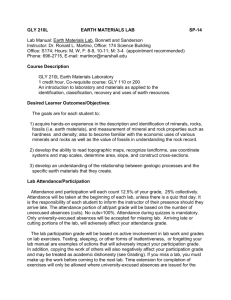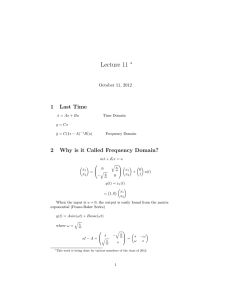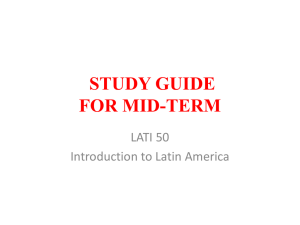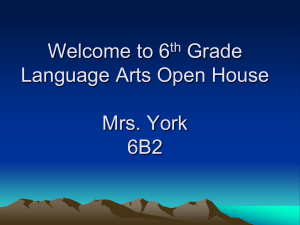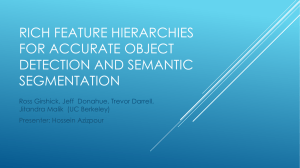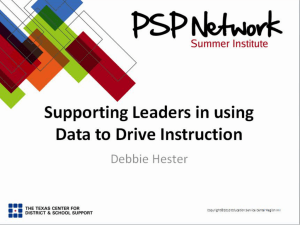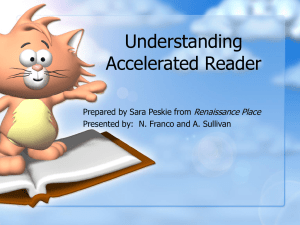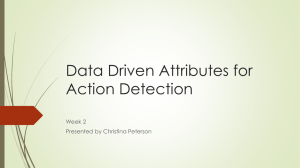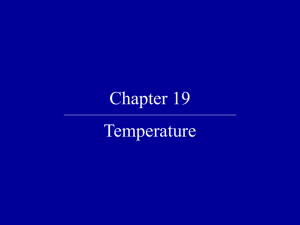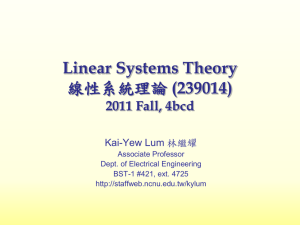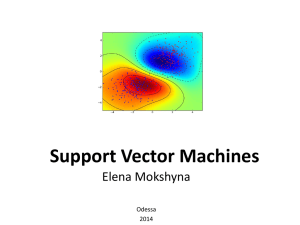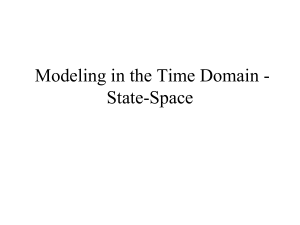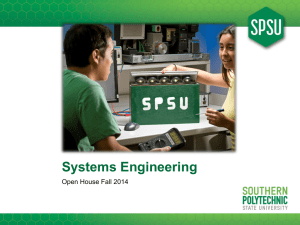Class overview - spsu
advertisement
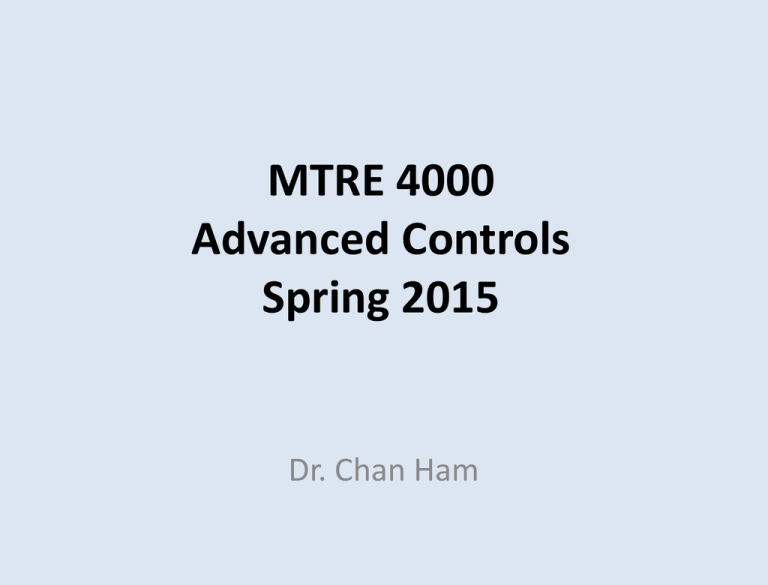
MTRE 4000 Advanced Controls Spring 2015 Dr. Chan Ham Class Schedule: • Jan. 6th: Class overview • Jan. 8th: Quiz#1, reviewing of control & math background • Jan. 13th: Sign up for class, agreement with class (name, email address, and signature) & 1st Lecture (Ch. 13) 1. Attendance check by 10:00AM 2. Lecture notes will be posted: spsu.pbworks.com Required technical background: Quiz#1 Closed-book & closed-note. No calculator • Matrix: inverse & determinant • Laplace Transform (LT): including partial fraction expansion & inverse LT • Modeling of system dynamics (Transfer Function): mechanical & electrical • Mason’s rule: find a Transfer Function for a system given by a block diagram Class Jan. 6th • Introduction to class: syllabus, major policies, and grading scheme • Class overview: subjects • Review of EE 4201 & Mathematical Backgrounds (Quiz) – Mason’s rule – Laplace Transform: including partial fraction expansion & inverse LT z-transform – Modeling of system dynamics: mechanical & electrical – Matrix: inverse & determinant Intro. to Class • Office Hours: Q322, cham@spsu.edu – M 8:30 AM – 11:00 AM & Wed 2:00PM – 4:30PM – By appointment (email preferred) • Class Website: http://spsu.pbworks.com/ – Announcements, solutions, etc • Policy: Attendance, HW, Test, & Others – Read class syllabus – No laptop or electronic devices during the class – Make sure everybody's fairness! Tests: 60%, Open-book for Test 1~3 Will be announced at least one week in advance. The tentative coverage is: 1. Test 1: Digital Control Systems 2. Test 2: State-space Variable Modeling (SVM) & Analysis 3. Test 3: Control Design (SVM) & Modern Control Theories (15%) 4. Final Exam: Comprehensive, closed book & notes • 20 % each except Test 3 (count only the best 3 out of 4) • With “Best 3 out of 4” arrangement you may elect either to drop or not take (regardless of your reason) any one of the four scheduled tests No make-up • If missed two tests with the written excuse from the instructor Final may be 40% (35% if one of missed exams is TEST 3) Homework and Quiz: 25% HW: assigned regularly, mostly once a 1~2 weeks 1. Grade only one problem randomly chosen Quiz if HW isn’t collected (solutions will be posted in advance) 2. One problem/page 3. Grading: – 10 points: correct answer & work all problems – 7~9 points: showed all necessary works regardless of the correctness of the final answer – 7 points: Late, but with all necessary works (within a week) – 4 points: on time, but same as the solution – Any violation: 1~2 penalty points/violation Homework and Quiz: 25% • HW is due at the beginning of the class (tardy -3 points after 10:00 AM). • Students are encouraged to work together Just don’t copy each other or from solution manual • HW: is based on the 5th ed. (solved the 6th ed. Problems? - 2 penalty points) & will be posted. Project: 20% 1. Both individual & term projects • Individual: Matlab/Simulink Simulations • Team, term project: 1~3 students 2. Topics (team project) 1) Design of a control system for a dynamic system: • Analysis, modeling, and design of a control system • Simulation using Matlab / Simulink 2) Survey and investigation of a state-of-art control or mechatronics system Preparing Sr. Design Project 3. Introduction to the Project – on 1/22 4. Project Schedule (TBA) – Proposal & Approval Mid Report Final Report & PPT Slides (Presentation by invitation) Attendance • Attendance: mandatory 1. May be checked by HW submission & return: in case did not do HW, still submit a paper with your name 2. Also randomly checked 3. May be used as a bonus 4. Late attendance is counted as a half absences - 2 penalty points/absence from the final class credit after 1.5 absences (e.g. two absences cause -4 while no penalty is given for 1.5 absences) Introduction to Class 1. Major Topics – Mechatronics: Systems & Control – Basic theories and technical inspirations! – Control system applications 2. Direction, coverage, and policy – Interested in control or not? For a good control or intellectual foundation – Essential for an interdisciplinary work and collaboration – For learning or just credits should be fair! Design of a Control System Class is based on linear systems exactly modeled Mathematical Backgrounds – Operational Calculus Matrix: State-space Variable Method Z-Transform: Digital control system analysis & design Major Class Subjects: Modeling & Control of dynamic systems 1. Digital control: Ch. 13 2. State-space Variable Method (SVM): Ch. 2 ~ 7 3. Advanced control theories/techniques: Ch. 12 1. Digital control – Discrete-time systems / z-transforms for analysis and design of digital control systems 2. State-space Variable Method (SVM) • An alternative method for System modeling using time-domain methods: nth order system (nth order DE) n # of 1st order DE One 1st order DE • Utilizing a (non-unique) set of variables – x1(t), x2(t), …, xn(t) – function of time – describe the future response if initial condition is known • In matrix form • Readily to computer solution & analysis x (t ) u( t ) x(t ) 2 d x dt 2 u( t ) 3. Advanced Control Theories/Techniques • • Advanced controls – Fundamentals of modern control systems controllability, observability, Ackerman’s formula, and pole placement – Control algorithms: optimal control Systems & applications (Project) – Application of various control systems – Robotics, Maglev, Satellite – attitude control & orbit changing – Computer (Matlab/Simulink) simulations Covered in this class: Linear Systems 1. Principle of Superposition f ( x1 ) f ( x 2 ) f ( x1 x 2 ) ex. f ( x) 3 x, f ( x) x 2. Homogeneity If output is y for input x y = βx for input βx where β:const. 3. Linearization: Taylor series expansion – For small range around operating point – Laplace Transform: only for linear system – Example: pendulum oscillator But, SVM can also be applied to nonlinear systems! (spring board to advanced controls!) 2
